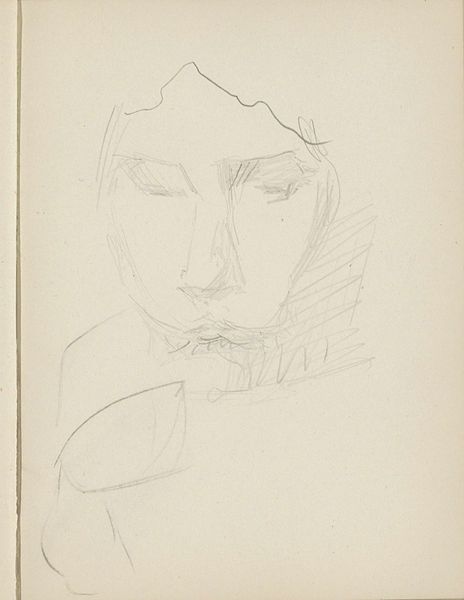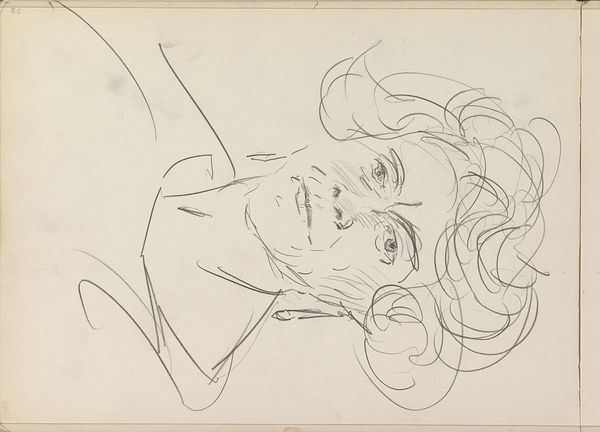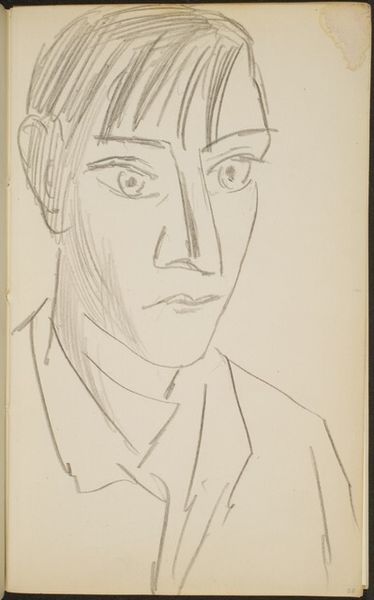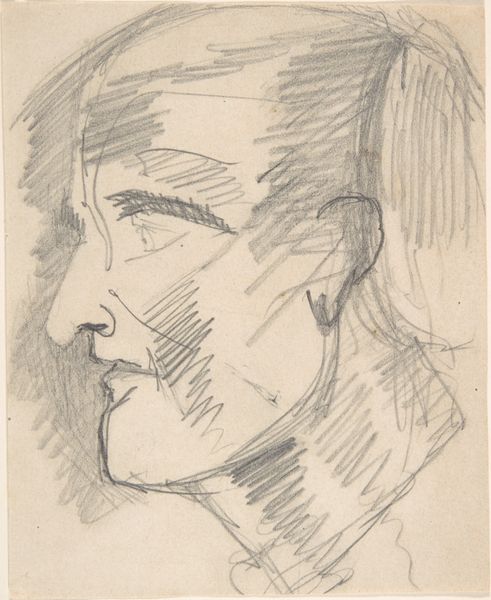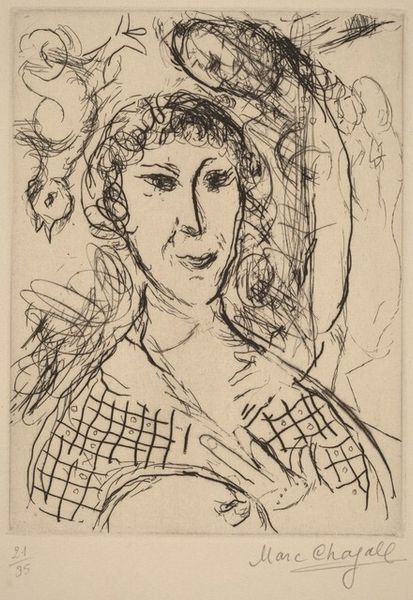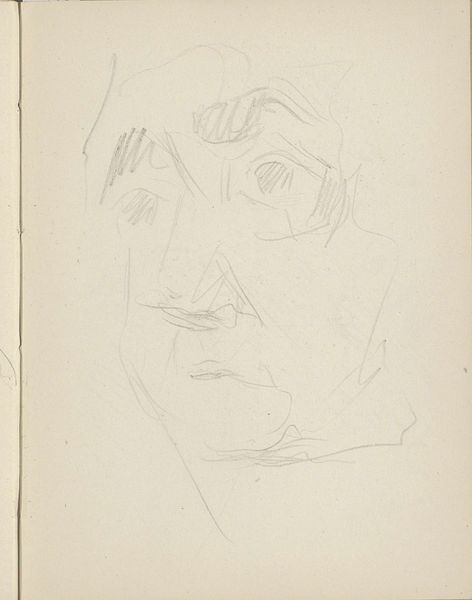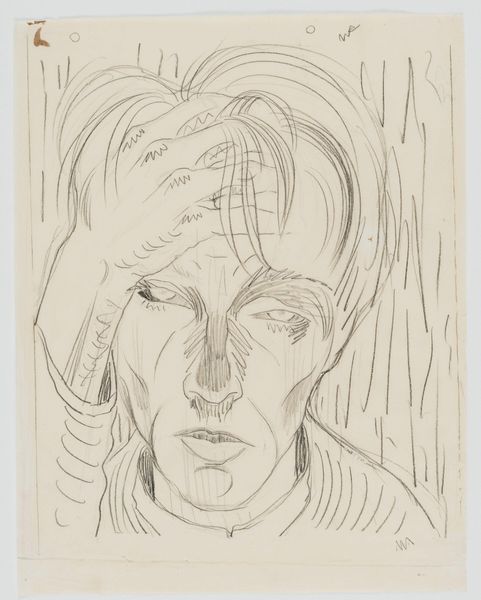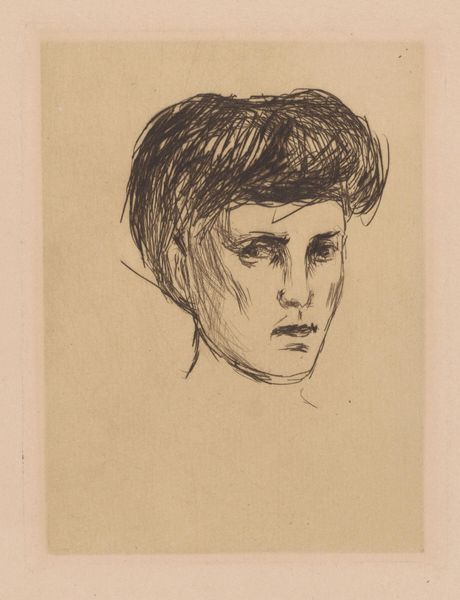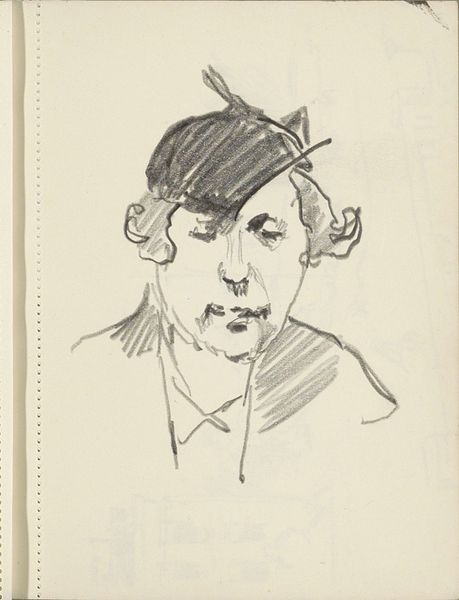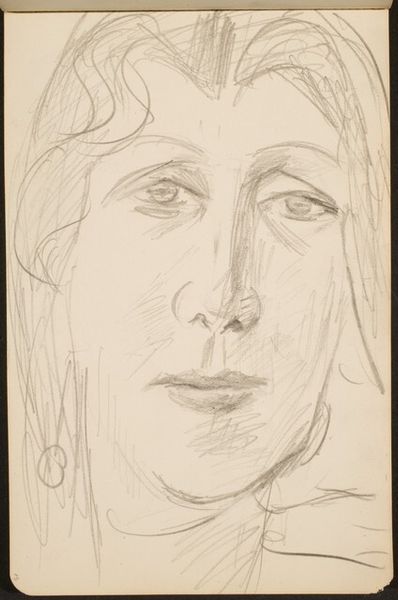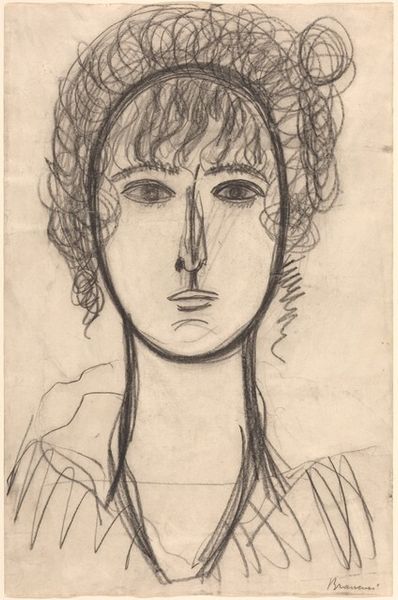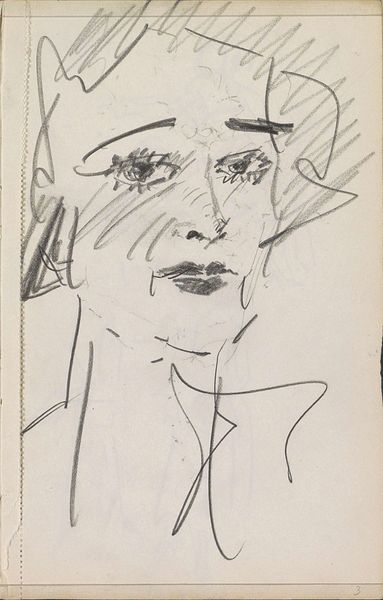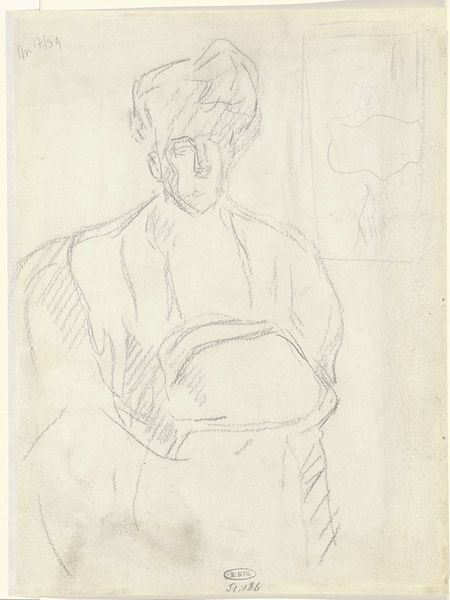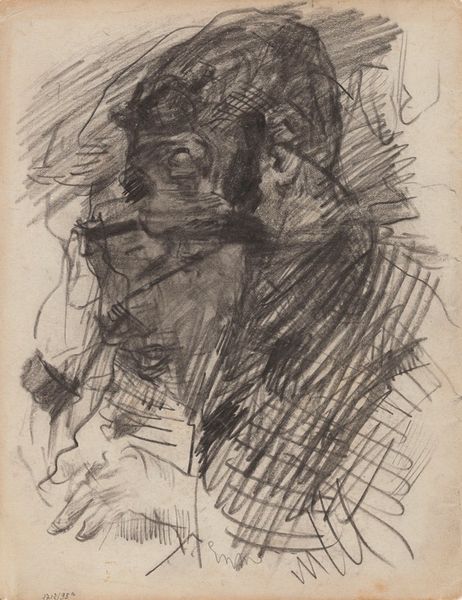
#
amateur sketch
#
facial expression drawing
#
light pencil work
#
pencil sketch
#
personal sketchbook
#
ink drawing experimentation
#
pen-ink sketch
#
sketchbook drawing
#
portrait drawing
#
sketchbook art
Copyright: Rijks Museum: Open Domain
Curator: It's interesting, isn't it? This is "Vrouwenhoofd" or "Head of a Woman," by Isaac Israels, created sometime between 1875 and 1934. Editor: Raw. The immediate impression is that it feels incredibly immediate. There's such directness in the pencil strokes; the materials are laid bare. Curator: Indeed. It appears to be a sketch, a quick study of a woman's face. I see a certain casualness that speaks to the artistic circles of the time and how they valued accessible, everyday imagery. The artist chose, seemingly deliberately, to not focus on the elite, or the monumental. Editor: And what kind of pencil do you think Israels employed here? There's a clear distinction between the heavily shaded areas, building form with short strokes, and the more ethereal lines defining the edges of her face and hair. Were these sketches preliminary work for a more finalized painting? How does the sketch speak to the artist's overall artistic project in the public eye? Curator: The artwork is kept at the Rijksmuseum and serves as a unique glimpse into the artist's process. His oeuvre features his subjects—frequently young working women from diverse socio-economic strata, such as shop assistants or milliners in their milieux. Perhaps the process itself becomes part of the performance; Israels elevates his own labour by rendering it a component of his legacy. Editor: This focus on labor and materiality does force us to ask, who was this woman? Was she paid for her time? How might our perception shift if we had access to Israels' broader studio operation or records concerning the procurement of his art materials? If art institutions, such as museums, collected his sketchbooks as avidly as finished oil sketches, the answer might come forth to us sooner. Curator: Good point. There’s so much we can infer, but definitive answers remain elusive without that broader historical and social framework. Perhaps that’s part of its allure; that interplay between public persona, production and interpretation. Editor: Absolutely. It highlights how we can't separate an artwork from the labor, material, and even the socio-economic implications that underpin its very existence. That enriches our understanding immeasurably.
Comments
No comments
Be the first to comment and join the conversation on the ultimate creative platform.
